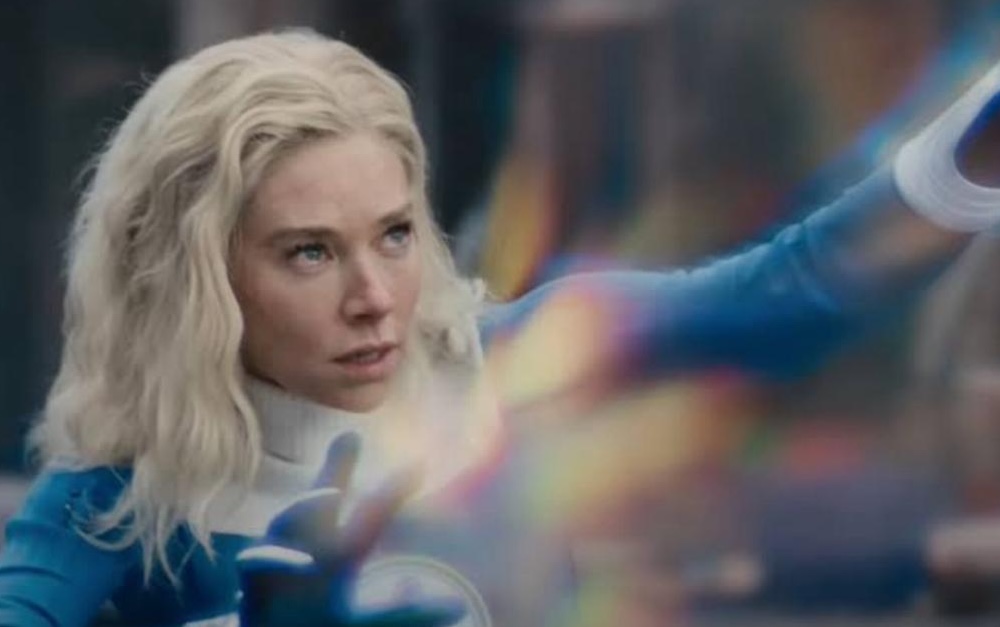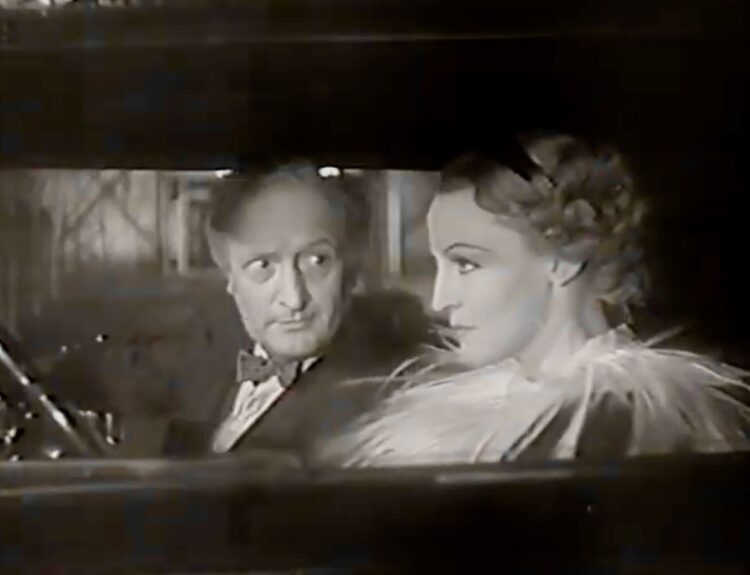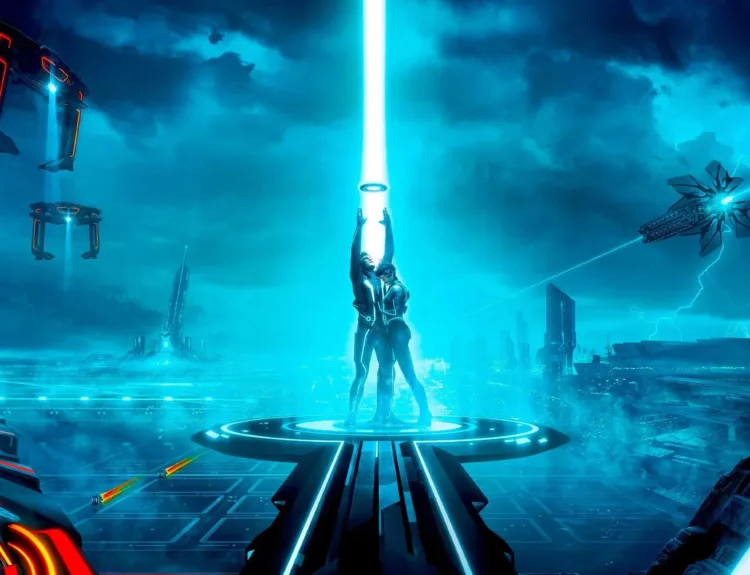This has been a month that we superhero and movie-loving nerds have been looking forward to for a while, where we would see the release of both a new Superman movie and a new Fantastic Four movie. And not just new movies, but brand new takes on both concepts. (And in the case of Superman, the beginning of a whole new shared universe). Superman paid off those hopes, at least as far as I’m concerned. How about The Fantastic Four: First Steps?
Spoilers
Somewhat. I’ll even say mostly. Not completely, but enough that I’ll still call it a win.
There are certain areas where The Fantastic Four, directed by Matt Shakman (who previously directed WandaVision) is outstanding. Important areas, where if you judge it on those areas alone, it’s a really good movie. Maybe one of Marvel’s best, and certainly one of recent-Marvel’s best. And without a doubt, the best actual Fantastic Four movie ever made.
(Actually, there’s not a single metric that I can think of by which you could evaluate this film and not declare definitively that this is the best Fantastic Four movie ever made. The competition is an unreleased Roger Corman-produced movie from 1994, two mediocre moves from 2005 & 2007 directed by Tim Story, a bizarre mess of a film from 2015 ostensibly directed by Josh Trank, although he more or less disowned the film upon its release. If there is a metric by which you would say one of these other movies is better, I cannot think of it).
What are these important areas? Just little things, like tone, production design, world-building, and special effects–pretty much everything to do with the way the movie looks and feels. It makes for a superhero action-adventure film which is tremendous fun.

If you don’t know, the titular team is made up of super-genius Reed Richards (who has stretchy powers), his wife Susan Storm (turns herself and other things invisible and can project force fields), Sue’s younger brother Johnny (lights himself on fire and flies around and shoots fire-based attacks) and Reed’s best friend Ben (permanently turned into a big orange rocky strongman). Their origin story (transformed by cosmic radiation when they ventured into space for the first time) is covered via a bit of media coverage, but the movie itself begins with them already well-established.
In this world (confirmed at the start as being an alternate one to where most of the Marvel Cinematic Universe takes place), the Fantastic Four are famous, successful and popular–superstar celebrities who exist as kind of an American royal family. Indeed, Sue discovers she is pregnant at the start of the movie, and the world reacts with the same sort of giddiness that you’d get the most beloved public figures that you’d get in the real world.
As a comic book reader, I’d say this is precisely the right take on the concept. Like with Superman earlier this month, the most classic iteration of the concept of the Fantastic Four is one of bright, outlandish adventure. I was wary at first of setting the story on a parallel earth, because mostly all this multiverse stuff has been disappointing and annoying, but in this case it allows the movie to jump-start the characters and the world right where we want them.

And with that, I’d add the directing, performances and core characterization to the movie’s strengths. Or at least, they are all solid.
Reed, Sue, Ben and Johnny are all well-drawn personalities, and all ably performed. They are fun to watch in the ways they complement with and contrast against each other, though we never go legitimately deep with them. Still, maybe that’s okay. We have a lot of fun with their bickering and teasing and occasional serious disagreements, but the movie never lets go of the idea that they are indeed a family who are bound together, both by blood and cosmic radiation. There ultimate solidarity with each other is something to be appreciated–it’s really where the movie’s hopeful tone shines the brightest. I enjoyed all four lead actors–Pedro Pascal, Vanessa Kirby, Ebon Moss-Bachrach and Joseph Quinn–but it’s probably Moss-Bachrach that is the most impressive at imbuing personality to his character, Ben Grimm,, considering all the CGI that stands between the actor and the screen.

The movie’s story is certainly designed to test our heroes. We are introduced pretty quickly to the threat of Galactus, a world-devouring interstellar titan, whose herald, a shiny silver woman on a flying surfboard, arrives to warn the earth that they should prepare for destruction. At first, everyone is pretty confident that the Fantastic Four will somehow deal with this threat, as they have with every other menace that the world has ever faced, but things go badly when it turns out that Galactus is as powerful as his reputation suggests. He is willing to spare the earth, but only if Reed and Sue hand over their unborn baby to him, who turns out to be some sort of nascent super-being who can free Galactus from his eternal hunger by taking his place (whatever, it’s a whole thing, but never really explored deeply). The super-team / family don’t take too kindly to that idea and run away back to earth. Sue gives birth along the way, and the world turns against the Fantastic Four when they learn that the team summarily rejected Galactus’ offer to let the earth live for the sake of their child.
This takes us to about the halfway point in the movie and up until here I had little to criticise about what I was watching. After this the movie doesn’t fall apart–that would be way too strong to say–but it does become flimsier, and its weaker elements start to become more apparent. Those weaker spots are to do with plot and pacing.

After the family deal some internal stresses as well as the way that public opinion has shifted against them, Reed comes up with an outrageously absurd plan to save everyone: he’s going to build a bunch of teleportation machines that will cover the earth and allow Reed to move the whole planet to another star at the other end of the universe, where Galactus won’t find them.
Now, this is a goofy movie in a lot of ways, and I don’t mind–Superman was goofy, and I flat out loved it–but the issue is that this plan is the focus for a whole extended sequence, but the idea is so poorly set-up (Reed teleported an egg earlier, but that’s it) and so flippant in its explanation that I can’t help being pushed out of the movie for a moment. I find myself wondering things like “Will this change the seasons or the length of the year? What about the moon–are we teleporting that too? That’s going to cause some problems,” etc. I’m not saying we necessarily needed more information, but the sequence needed to be more compelling, so I could focus on what was important and leave the minutia behind.
As it is, the rushed execution of this whole plot point makes it obvious from the start that it’s going to fail, which results in the experience of watching it feeling a little bit more like twiddling my thumbs than I’m sure is desirable.

And of course, the Silver Surfer (she’s never named that, but yes of course that’s who she’s meant to be) zips in and blows all these teleportation machines up. The only one to survive is the one in New York were the Fantastic Four live, so they decide to lure Galactus into a trap. Using their own son as bait, they will trick Galactus into coming out his spaceship and stepping into range of their machine, teleporting him to the other end of the universe. No explanation is given for why they think Galactus would fall into this trap, when he clearly knows what the teleportation machines are. And no explanation is given for why Galactus would even bother coming out of his spaceship to pick up the baby at all, when he has the Silver Surfer right there to do the job for him.
But whatever, he does come out, and it turns out that he’s not so stupid as to allow himself to be zapped off to the far reaches of the cosmos, and a big battle ensues. It all ends with the machine being turned and the team basically pushing Galactus into the portal and sending him away. It’s all fine as far as climaxes go, and nowhere near as bad as the parallel scenes in earlier Fantastic Four movies, but nothing amazing.
Then suddenly there is the extra bit of action, where Galactus starts crawling back through the portal, which won’t close for another few seconds. Johnny Storm gets ready for a big final sacrifice to push him back through the whole, when out of nowhere the Silver Surfer zips in and does it for him (think Rose Tico saving Fin in The Last Jedi).

This abrupt resolution the Surfer’s character arc is probably the movie’s biggest fault. There is one scene earlier where Johnny confronts her with the truth of all the worlds she has helped to destroy, which she obviously feels very conflicted about. And then she doesn’t appear again until she abruptly saves Johnny, and then she’s gone. The character clearly needed at least one story beat in between these two moment, in order for her turnaround at the end not to feel like a contrived deus ex machina.
My guess is that there probably was such a scene, at the script phase or the rough edit phase, but that it was cut out somewhere along the way for some reason. (This hypothetical scene might have also served the purpose of explaining why Galactus is coming to earth himself.) I have no idea if this is actually true, but the movie needs such a moment for the story to feel like it’s unfolding organically.
There’s also, incidentally, a sequence with the Mole Man in the back half of the movie that is supposed to be funny, I guess, but which falls flat for me. It’s not as critical to the movie as the other things I’ve mentioned, but it qualifies as a “negative”, so I’ll mention it here. The most disappointing aspect of it is probably just the fact that other than the title heroes, the Silver Surfer and Galactus, there are almost no other characters of note in the movie at all. Harvey Elder, the former Mole Man, is one of the few, but his personality is too broad and shallow to make any sort of impression.
So in spite of the largely positive reviews of The Fantastic Four: First Steps, I can’t quite say I agree. I did like it, and there is a lot to recommend it for, but it falls short of being in upper echelons of superhero or even Marvel films (which I’d say include Winter Soldier, Thor Ragnarok, Guardians of the Galaxy and various Avengers movies). But it probably lands in the tier just below that, so it’s certainly worth a watch if you are looking for a fun time and are at all interested in the subject matter.

Other thoughts:
• A lot of attention is given to baby Franklin Richards in this movie, and the possible role he might have in the future of the MCU. He plays a significant part in the story–obviously he’s the McGuffin that Galactus is after, but also he reveals that he does have some sort of special powers when he literally brings his mother back to life after she is killed in battle. It was only after watching all this that it occurred to me that the actual title of the movie, “First Steps”, really refers to him as much as anything else, given that the phrase is often associated with a baby or young child. It’s a bit of cleverness that worked for me.
• Mark Gatiss who co-created Sherlock and featured in that show as Mycroft Holmes, and also wrote of modern Doctor Who episodes and featured in a couple of them, has a small part in this movie as a talk-show host. The fact that he gets a big “solo screen” during the credits to acknowledge his part in the movie is an indicator as to how few important characters this movie actually has.
• The movie has two post-credit scenes (or technically, one mid-credit, one post-credit. The mid-credit scene is the “important” one, in which we get a glimpse of Doctor Doom as played by Robert Downey jr, although we don’t actually see his face. This presumably will tie into the post-credit scene of Thunderbolts* in which we see the Fantastic Four’s ship making it’s way to the “main” universe, and thus into the forthcoming “Avengers: Doomsday” movie which is where all these characters are meant to appear next.
• The second scene is just the full version of a fictional take on a 1960s Fantastic Four cartoon, in the style of the actual Fantastic Four cartoons from Hanna-Barbera. It’s cute, but not particularly interesting, except in that it establishes that in this universe, even in their kids’ cartoon incarnations, the characters don’t use their traditional “superhero” names. Nobody in this film refers to “Mr. Fantastic” or “the Human Torch”–the opening jingle of the cartoon just refers to them by their first names.
• Also, after seeing that sequence, my animation-loving daughter said, “You have intergalactic travel but that is the quality of your animation? Where are your priorities?” (She quickly added that she was kidding).

• Amongst the many comparisons that one could draw between this movie and Superman are that they are both comic book movies featuring characters who launched a new wave of superhero characters for their respective companies, they both feature the lead characters as already established heroes in universes that audiences are being introduced to for the first time, both of those universes are full of endlessly outlandishly science fiction goofiness that is sort of just flung at the story, both sets of characters are beloved by their respective publics but find that good-will torn away from them for a period of time, both feature super-cute side characters designed to help bring some lightness to the movies (Krypto in Superman and H.E.R.B.I.E. the robot in The Fantastic Four) and both are better than the other superhero films that their respective movie studios have put out for a long time.
Movie News
Berita Olahraga
News
Berita Terkini
Berita Terbaru
Berita Teknologi
Seputar Teknologi
Drama Korea
Resep Masakan
Pendidikan
Berita Terbaru
Berita Terbaru
Berita Terbaru



